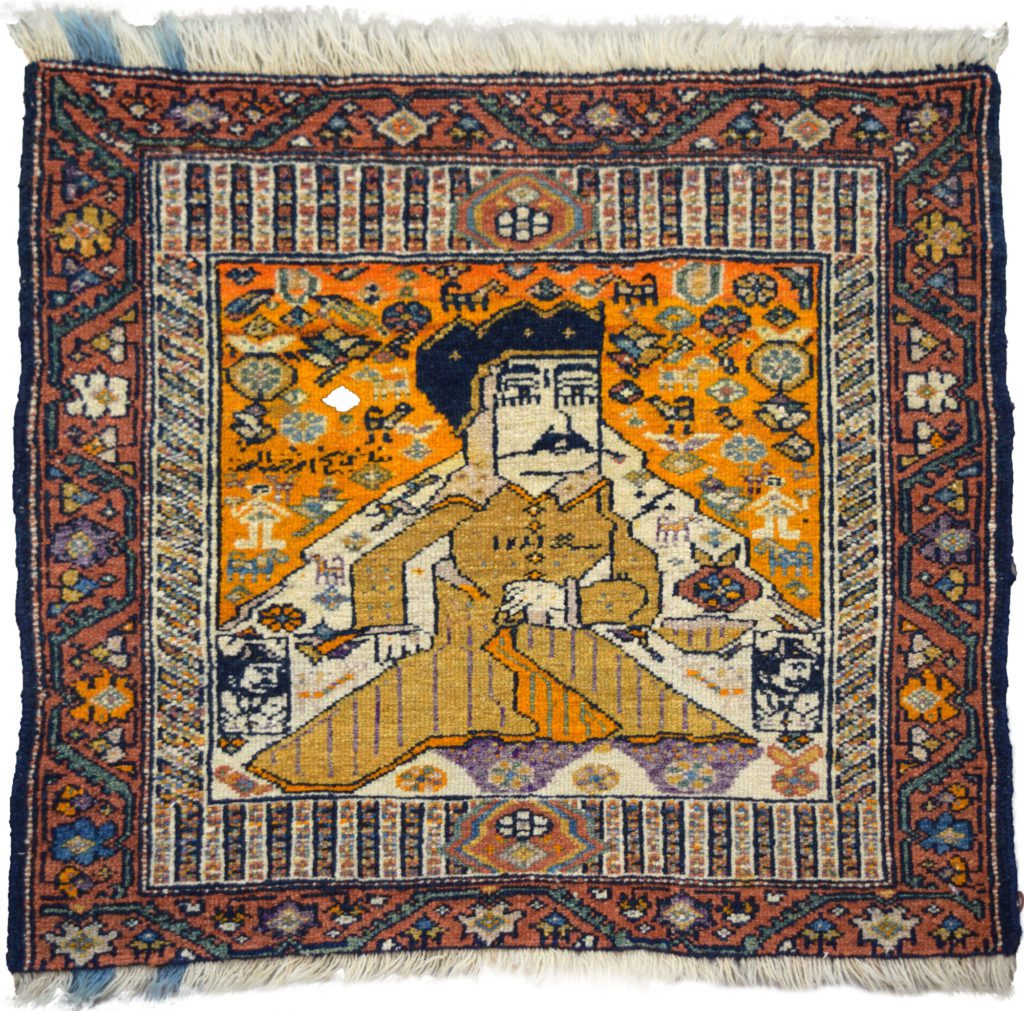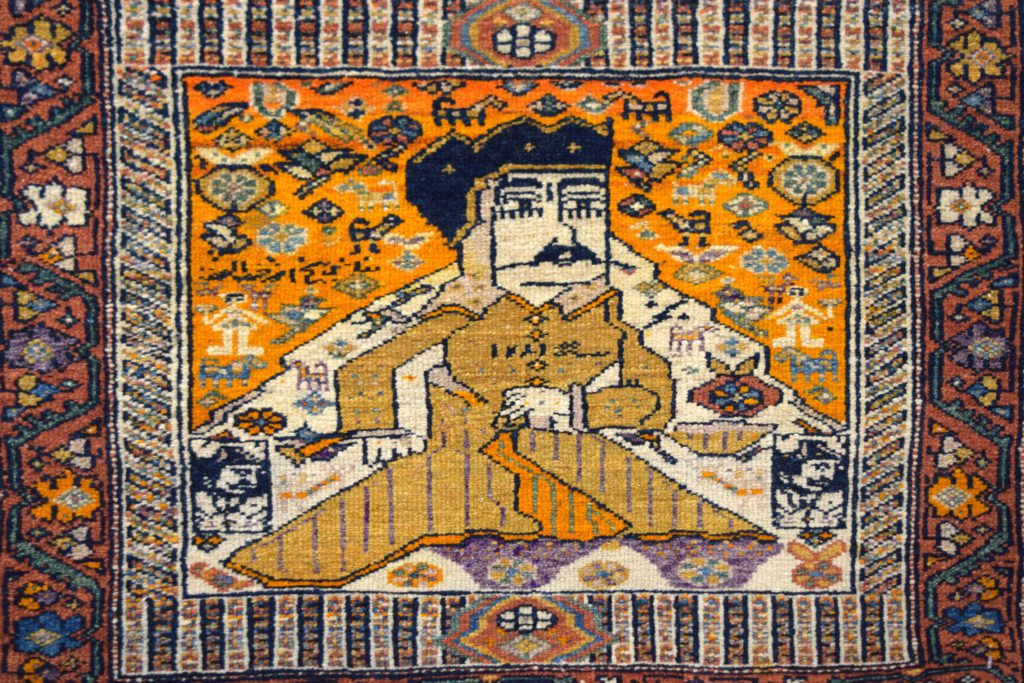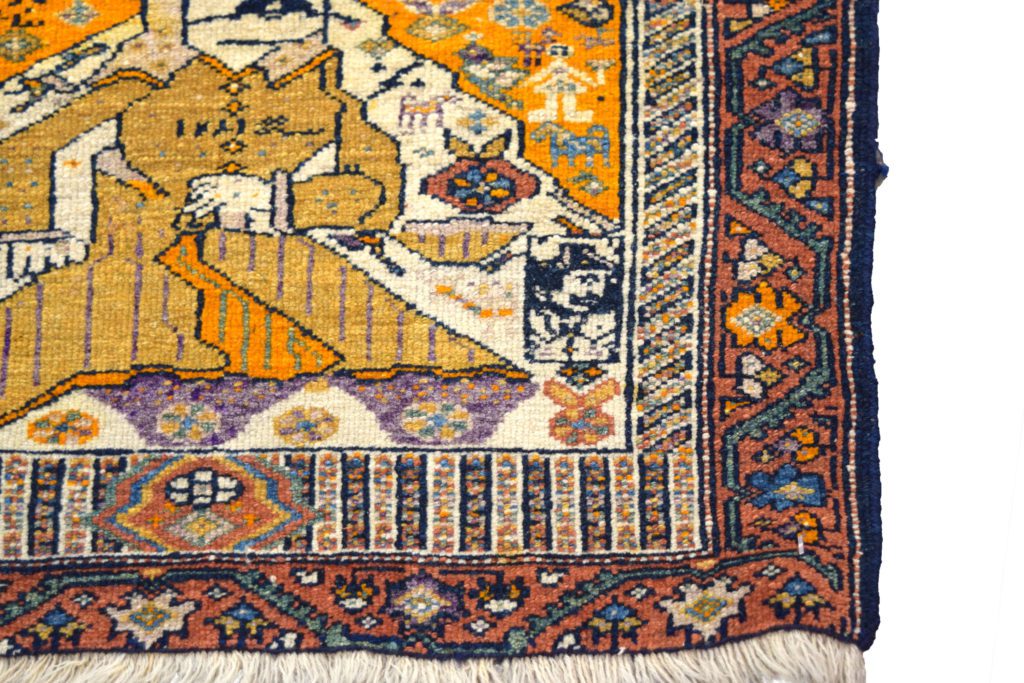Staff Pick – Karim Khan Zand Antique Carpet
Within human history, there are only a few times where emperors were honored for their peace and prosperity rather than their battles and tribulations. In this week’s “Staff Pick,” immerse yourself in this carpet’s vintage golden pile, and discover more about the mid-18th century ruler, Karim Khan Zand, and what went into this fabulous carpet’s creation.

Karim Khan Zand was the primary ruler of the late 18th century in Iran and belonged to the Lurs, one of the four main Luri tribes. During Karim Khan’s uprising, he strategically moved Luris into power in Iran. Furthermore, Karim instituted foreign policy and trade agreements with Britain. In addition, he also implemented a fair taxation system, judicial system. When presented with the title of king, he instead titled himself Vakilol Ro’aya, which means Advocate for the People. Denying the title king was atypical for Persian emperors. But, his faith in the Persian people gained him respect and popularity in Persia. Karim Khan continued his legacy by rebuilding the city walls of Shiraz in 1767 as well as fully restoring the tombs of Persian poets Hafez and Saadi Shirazi. Additionally, he rectified the public market (Vakil Bazaar), the citadel (Arg of Karim Khan), and entertainment spaces for foreign guests, ambassadors, and official ceremonies (Kulah-e Farangi).

As a result of Karim Khan’s efforts, the Zand dynasty is known for its peacefulness and prosperity. So peaceful that roads and trade routes reportedly were free of bandits and robbers throughout his ruling. Karim Khan’s impact was so profound that during the Iranian revolution in 1979, the people of Shariz refused to change the names of the streets named after him. The love and respect for Karim Khan can still be seen today, most notably in our carpet example.

For such a small piece, 2’ x 1’11,” this carpet has intricate motifs, detailed with hues of orange, tan, gold, purple, indigo, green, and cream wool. When creating this carpet, artisans utilized a traditional Persian hand-knotted weave. This weave requires each thread of hand-spun yarn to be hand-knotted into the wool foundation. In addition, master-weavers implement organic dyes to obtain the resonating hues of orange, tan, gold, purple, indigo, and green wool. Still preferred today, weavers prefer these organic dyes for their vibrant and fade-resistant hues. Thanks to the hand-knotted pile and foundation, this piece remains completely functional, even after 140 years post creation.

Being the center of attention, Karim Khan, detailed in deep indigo, sits stoically atop a traditional Persian flower garden design. Behind him, a triangular structure surrounds most of his body and could represent a mountain, path, or cape. Pomegranates, flowers, animals, and caterpillars found peacefully coexist and pop off the neutral cream background. Behind this structure, an exquisite shade of gold/yellow fills the space and develops an ideal contrasting tone for the additional motifs within the field. These motifs include animal, flower, butterfly, and human figures detailed in cream, blue, tan, and green yarn. Like a picture frame, Karim Khan becomes encapsulated by an intricate interior border. With similar hues throughout the design, a sat & pepper pattern, detailed by deep indigo, creates structural motifs interpreted as columns. Two small medallions located within the interior background sponsor two individual flower motifs and cause contrast to the structural motifs. The exterior border has a more traditional design, incorporating flower, butterfly, and vine motifs that interconnect throughout the carpet.

With so much history and meaning behind this piece, it is astonishing to think that this piece was made nearly 100 years after the death of Karim Khan. If this piece interests you, check out more of the Orley Shabahang Antique Collection via our website or dive into our digital showroom on 1stdibs.com.
